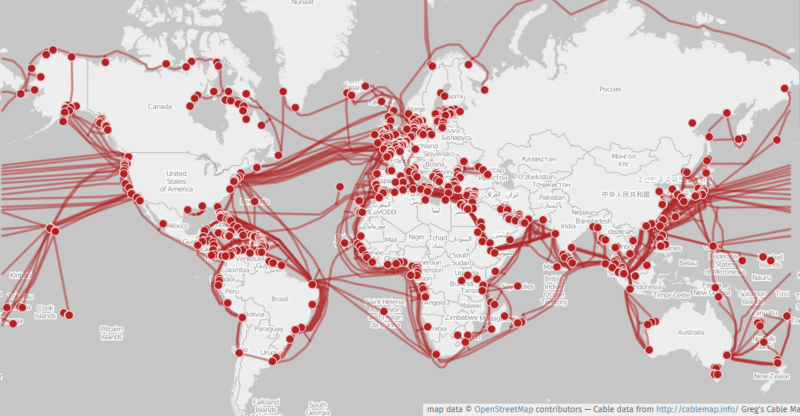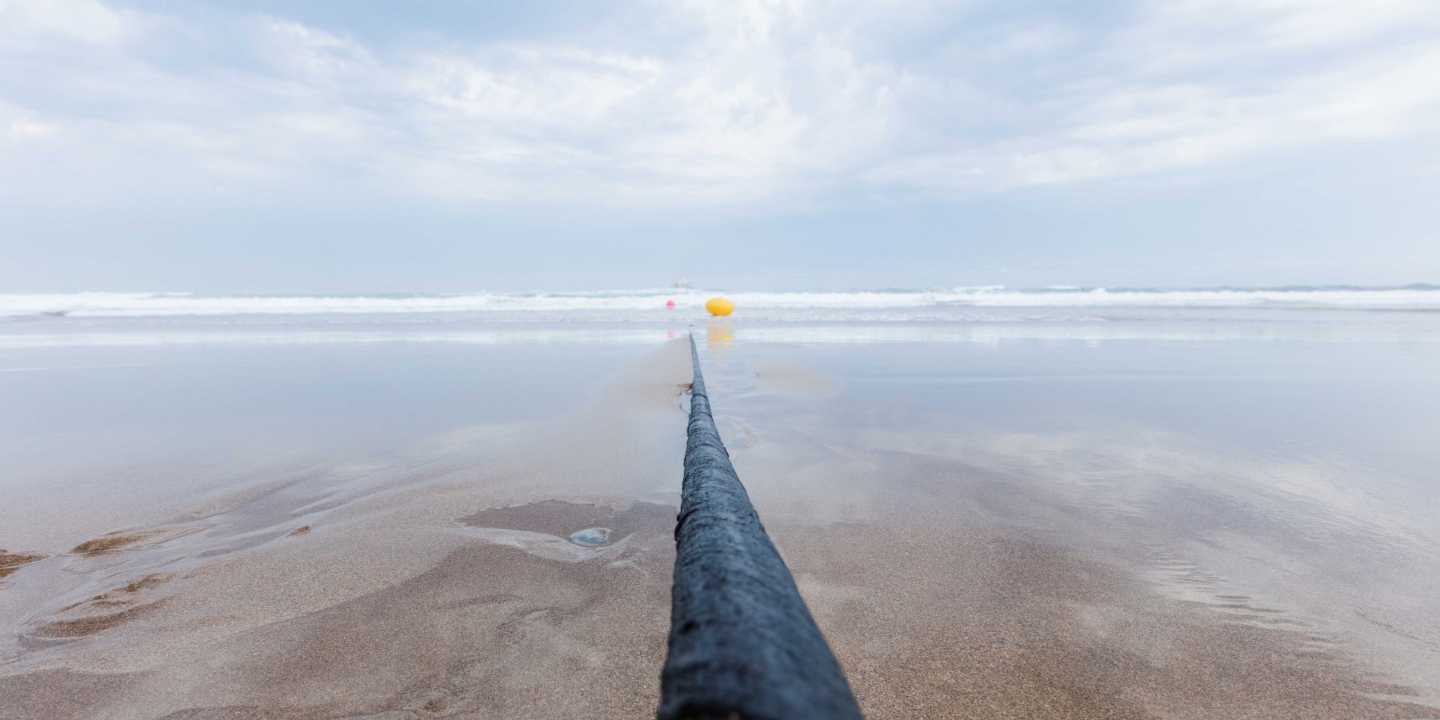Lately, people worldwide have been caught off guard from hearing the news about the volcanic seamount eruption in the Tongan sea. The US geological survey estimated that the earthquake resulting from the deep-sea volcanic activity is equivalent to 6 magnitudes at the zero-depth (Wire 2022). This eruption caused tsunami waves—sweeping the Pacific Islands, including Tonga Island. This pacific island nation also suffers from fiber optic cable malfunctions laying on the seafloor, often undisturbed by human activities. With the physical disturbance of the undersea cables, public and private services in Tonga are immensely affected. The operations of hospitals, schools, universities, and administrative offices become largely hampered.
We Rely on the Seafloor
“The force of things,” as Bennett (2004) described, applied to this natural disaster event. It means that the seafloor has the capability to render the disastrous event, albeit humans, in general, often take the seabed for granted. This volcanic activity in the deep sea is not a mere natural disaster. Instead, it can be a self-reminder of how we are highly wired with the seafloor. We rely on the seafloor and its nature for our activities. Meaning what happens in the seafloor also modulates the everyday practices we consider ordinary and perhaps, mundane.
While undersea cables and seafloor are integral to our lives, there is a dearth of attention to these so-called non-humans. Perhaps primarily, it has to do with the dominant narratives of the wireless world—the idea on which one communicates and makes an online connection without cables. The notion of wirelessness further takes into our imaginations that satellites are central in transmitting our internet data and information daily. Satellites and outer space are often linked with sophisticated technologies and humans’ achievement to subdue the sky above us.
“The fanciness of the satellites overshadows the magnificent and overly complex roles of the undersea cables and seabed.”
Merdeka Agus Saputra, PhD candidate in the Marine Political Ecology group
While the seafloor and undersea cables are not as classy as satellites and anti-gravity floating astronauts, in reality, we are more highly connected with wires than expected. We can do our everyday lives because of interconnecting cables on the seafloor, which spans multiple jurisdictions and territories. For starters, undersea cables contribute to over ninety-nine percent of our internet data transmission and communication at the speed of up to 240 Tbps (terra bite per second), away faster than that of satellites. Nevertheless, the undersea cables are as overlooked as the seafloor because they submerge in the sea.

Why Should we Care?
So, why should we pay attention to the undersea cables and seafloor? What is the essence of discussing these two materials? I have anticipated that most of you will question this essay as such. In fact, it is also not uncommon for humans to ask the logic behind every idea thrown at them. We are born to question realities around us. This human nature is imperative, too, to reveal what has been covered and removed from our gazes. We can enlighten ourselves about new or old nostalgic things with such questions. Barrad (2011), who studied quantum physics and its entanglement, reminded us. “Do not take for granted objects such as undersea and seafloors because they do not exist for nothing. They provide meaning to us”.
Back to answering the questions earlier, there are several reasons why we should not take this issue for granted. The Tongan eruption takes our focus on the seafloor and undersea cables. We never consider them necessary, although we rely on these two specific materials. In this regard, the seabed is integral to providing a secure space for undersea cables. “Secure” means that there is less human interference on the wires, which may jeopardize the flow of information. The specific quality of the seabed is not available onshore. On lands, people can dig and steal the underground cables, but under the sea the cables are well protected by mother nature. Without so much hindrance, the undersea network can then transfer our data to our houses, connecting and bringing those far away from us, close to us. Seabed, thus, assists undersea networks in connecting parents with their children, husbands with wives, employees with employers, etc.—you name it. However, do we even pay a closer look at what price the seabed should sacrifice for the undersea infrastructure?
The Sacrifice of the Seabed
As engineers will lay the optic fiber cables on the seafloor, they should ensure that the seabed has been “flattened” and should only be the road for the submarine cables. Meaning any physical disturbances, including coral reefs, anemones, sea cucumbers, and other benthic creatures that get in the way of the undersea cables, should be removed from the seabed. Yes, we consider these marine animals essential for our post-humanist view—the notion that we should save the environment for our future generations. This sacrifice reminds us that we are never apolitical, albeit we resent politics. We are a product of the politics where a group of capable people decides what is worth prioritized and whatnot on the seafloor, to which we only follow their decisions. The decision will mainly be down to the importance of humans, outweighing the importance of ocean health.
“We are political creatures, intentionally or unintentionally.”
By and large, this writing is not talking about right or wrong when it comes to the undersea cables and the sacrifice of seabed to accommodate our global telecommunication infrastructures. However, I try to invite readers to notice that we are political creatures, intentionally or unintentionally. We make a decision as what we consider a necessity. Nonetheless, we should not forget that the non-humans such as seabed and undersea cables also play a vital role in our lives. By recognizing the seabed and its sacrifice, we, at least, break down the notion of superiority ingrained in our minds—the colonial thoughts we use to imagine ourselves as superior or more dominant than the seafloor. For that reason, we should change this mindset to see the seafloor as an equal to us. We need seafloor for our submarine cable infrastructures and vice versa; maybe seafloor needs us to protect its ecosystem, too.
References
- Barad, K. (2011). “Nature’s queer performativity.” Qui Parle: Critical Humanities and Social Sciences 19(2): 121-158.
- Bennett, J. (2010). Vibrant matter, Duke University Press.
- Wire, N. (2022). “Massive volcanic eruption in Tonga caused significant damage.” from https://www.france24.com/en/asia-pacific/20220116-massive-volcanic-eruption-in-tonga-caused-significant-damage.
